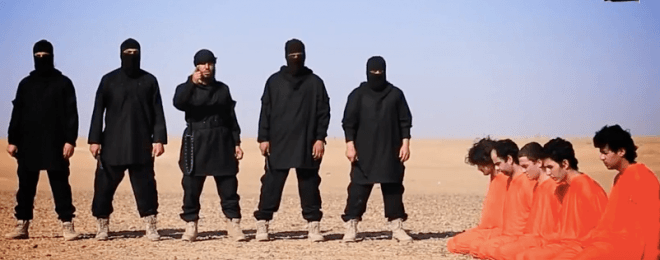
The Islamic State group admitted that Omar al-Shishani, senior leader of the terrorist group, was killed in an air strike in Iraq.
A monitoring group, based in Britain as well as the Pentagon, had said in March that the "minister of war" was killed in Syria in a U.S. air strike, saying that his death would be a big blow to the group's operations in Iraq, Syria and elsewhere. High-level officials in Washington and the Syrian Observatory for Human Rights had confirmed the death.
Abu Omar al-Shishani, also known as Omar the Chechen, was killed "in the town of Sharqat as he took part in repelling the military campaign on the city of Mosul", a website affiliated to Isis stated on Wednesday citing a "military source." However, the statement did not mention when Shishani died. The Pentagon officials have neither confirmed nor denied the report.
Mosul is the last city in Iraq that is under the control of the Isis, Al Jazeera reported.
Head of Syrian Observatory for Human Rights Rami Abdelrahman was quoted by Reuters as saying that Shishani was wounded in the air strike in March and died shortly after in the east of Raqqa.
"I confirmed from the doctor who went to see him," Abdelrahman said while adding that Isis delayed the announcement of his death to probably look for a successor.
Shishani, whose real name was Tarkhan Batirashvili, was a fierce fighter born in the Pankisi Gorge region of Georgia in 1986. He was apparently Isis leader Abu Bakr al-Baghdadi's close military adviser. Labelled by U.S. officials as "equivalent of the secretary of defence" for Isis, Shishani is among most wanted militants for whom Washington offered $5 million dollars to anyone who provided information to erase him from the battlefield.
He joined the military in Georgia in 2006 and fought against the Russians after fighting as a rebel in military operations in Chechnya. According to U.S. officials, Shishani was discharged two years later due to medical reasons.
He spent over a year in prison following his arrest for the possession of weapons in 2010. He left for Istanbul after that in 2012 and then later Syria, Reuters reported.
He commanded a group of foreign fighters in northern Syria and joined the Isis. According to the US State Department, Shishani was identified as the military commander of the militant group in a video in 2014.









